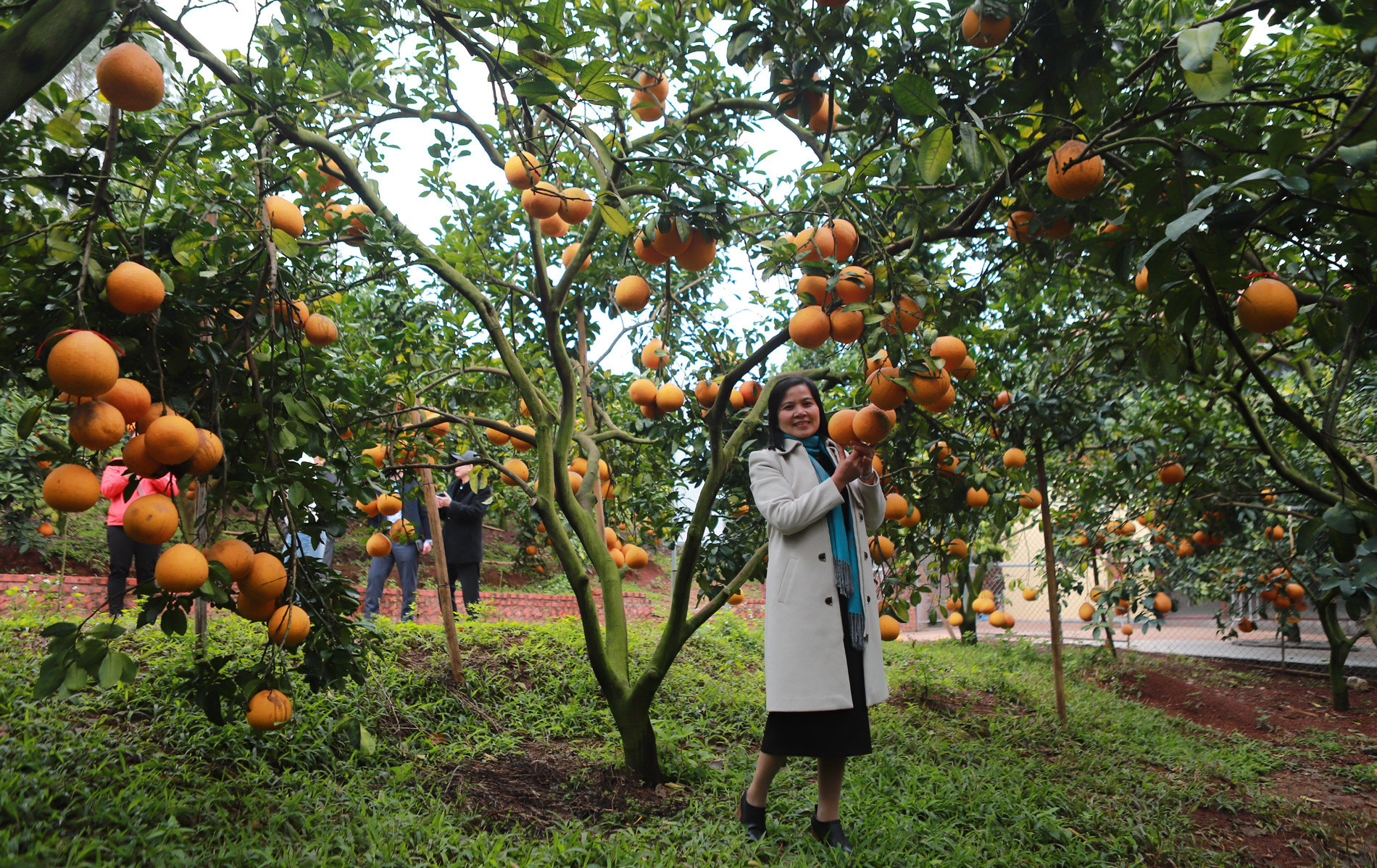
On pre-Tet days, the orange and pomelo orchards of Nguyen Van Huu in Thanh Hai, Luc Ngan in Bac Giang turned yellow with heavily laden trees and ripe fruits. Hundreds of visitors flocked there to visit the orchards.
Huu has been growing fruit trees on the land for many years which brings turnover high enough to feed the entire family. However, his agritourism business has just begun.
“I am happy when hearing from visitors that there are many beautiful landscapes, delicious fruits in our village, and that people are friendly and hospitable,” Huu said.
Though he has just begun developing agritourism, he can receive 200 visitors each day and 1,000 visitors on weekends. Visitors can taste delicious dishes, harvest pomelos, and oranges together with farmers. Thanks to this, his fruits have become better known.
He revealed that he could harvest 300 tons of fruits this year with the value of VND6 billion, which meant profit of VND3 billion.
Huu is not alone. Other farmers in Luc Ngan have begun developing agritourism. Farmers cooperate with travel firms to design ecotours. Travelers enjoy picking up litchis and eating fruit right in the orchards.
Minister of Agriculture and Rural Development Le Minh Hoan, when visiting the ecotourism litchi garden in Giap Son commune last year, responded with “Great!”. He bought a litchi tree in the orchard owned by Nguyen Van Son as he was impressed by the home-garden litchi tree model.
In an area with high mountains, deep streams and valleys, Bui Ngoc Thang, Director of Pha Din Tourism Cooperative (Thuan Chau, Son La), is also running an agritourism model.
His cooperative, in addition to growing fruit trees in accordance with clean-production model, also attracts tourists. Thang and his cooperative members invite people to come there to see how they grow trees and experience farmers’ daily activities.
The cooperative is running a tourism site, called Pha Din Top, covering an area of 30 hectares, with flower gardens and area for spiritual activities.
There is an eco-forest area, where there are plum, peach and medlar trees. Visitors to the tourism site can relax while experiencing interesting activities, such as taking care of trees, picking fruits and tasting fruits in the orchards.
Pha Din Top has become increasingly famous. The cooperative received more than 10,000 visitors last National Day holiday.
In An Giang, Nguyen Van Sam, a local farmer, took a daring move when using his 12 hectares of rice field and garden to develop ecotourism. The farmer receives travelers who come to do sightseeing and take pictures, and he provides accommodation and entertainment services every year, which brings him an annual profit of VND3 billion.
Agritourism
In the world, agritourism began developing in the 1980s. In Vietnam, agritourism is likened to a ‘gold mine’. Terraced rice fields have become a famous tourism product though it doesn’t need heavy investment, while coastal areas, and coconut and rice growing areas from the north to the south have become new attractions for tourists.
Nguyen Thi Thanh Thuc, director of Bagico, said if Vietnam’s agriculture, with its long history of development, can be exploited properly in association with tourism development, this will be a business field with great potential.
The income of agritourism not only comes from tours, but also from the sale of farm produce and specialties.
“Agritourism is an interesting idea,” Hoan said, adding that it creates a commodity economy as it generates products for trade. Second, services are created, which is a kind of added value. And third, it generates an experience economy, which brings originality, differentiation by affecting clients and consumers emotionally in a natural way.
Hoan suggested that instead of gathering strength to increase output and expand production scale, farmers can develop an agriculture economy based on services and experiences.
In Mu Cang Chai in the northern mountainous province of Yen Bai, farmers till and sell rice, but also "sell" the views on their terraced rice fields. This explains why the rice output on terraced fields is much lower than on the rice fields on the plains, but the farmers’ income is much higher.
Ngoc Ha